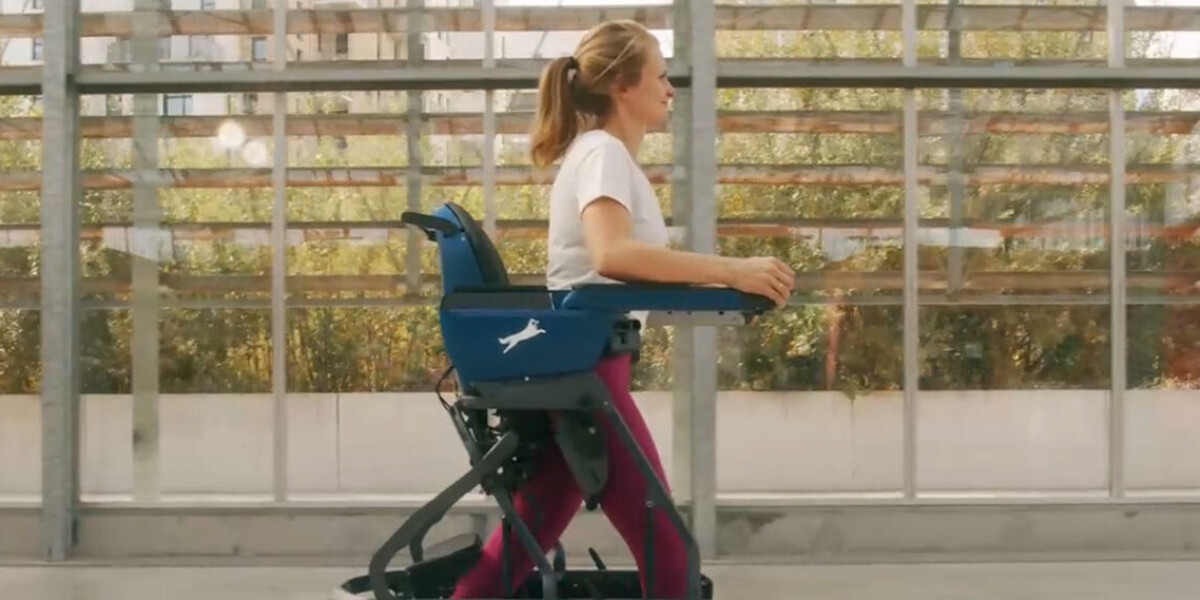
French hospitals’ revolutionary exoskeleton enables wheelchair-bound patients to walk
- Select a language for the TTS:
- UK English Female
- UK English Male
- US English Female
- US English Male
- Australian Female
- Australian Male
- Language selected: (auto detect) - EN
Play all audios:

THE TECHNOLOGY IMPROVES THEIR HEALTH AND INDEPENDENCE - AND MAY SOON BE AVAILABLE FOR USE IN HOMES Hospitals across France are starting to receive a revolutionary exoskeleton which has been
found to let some wheelchair-bound people learn to walk again. Tested in a Paris hospital by 150 patients who were recovering from strokes, the system allowed some to return home on their
feet. Others needed it to move around but were able to stand upright and were in better health. Called Oxilio, the exoskeleton has small wheels and strong arm rests, as well as
computer-controlled supports around the thighs and hips of the patients. A lifting system helps the user to stand, and then the exoskeleton supports movement so they can take steps. Read
more: French school friends design tilting chair to help with mobility issues HOW OXILIO WORKS Sensors control the movement and monitor the patients, who very quickly gain confidence as they
realise they can walk without the risk of a fall. Only patients with some movement in their legs benefit from the system. As well as being trialled on stroke victims, it has been used with
people left wheelchair-bound after road accidents, and illnesses such as multiple sclerosis. Engineer Damien Roche was inspired to make the system in 2019 after a family member was put in a
wheelchair. “Putting someone in a wheelchair is now the usual solution for their handicap, but it is also one of the most inefficient parts of our health system,” he said. “Life quality
suffers, people become dependent on others, their health inevitably declines and the wheelchair limits their ability to respond to physiotherapy and other treatments.” Read more: Wheelchair
brakes win top prize at France’s invention competition IMPROVED BALANCE AND STRENGTH Along with doctors and physiotherapists, he developed a treatment system called Lifebloom One, which
incorporates the use of Oxilio wheelchairs in physiotherapy sessions and around the hospital. Using the Oxilio means patients are safe and the therapist can concentrate on specific movements
to improve mobility. Outside therapy sessions, patients using the Oxilio can continue to work on their own to recover automatic walking movement and improve balance and strength. “It means
the muscles do not waste away so much and the benefit from the physio is much higher than if people return to their wheelchairs at the end of the session,” a spokeswoman for the company
said. “The time for people to recover some strength in their legs and to move on their own is greatly reduced – by months, not days, the clinicians say. “Of course, it is also good for
morale to be upright and able to move.” MOBILITY FOR PATIENTS After its successful trial, the system has been cleared to be used in hospitals all over France. No price information has been
given because the exact contracts from one establishment to another vary widely. Mr Roche is confident that enough money will come in to expand production in the company’s Lille factory and
offer Oxilio chairs for use in the home as well as in hospitals. The spokeswoman said this could be in the next two years. A waiting list for people who think they might be able to use the
system has been opened on the Lifebloom website.
